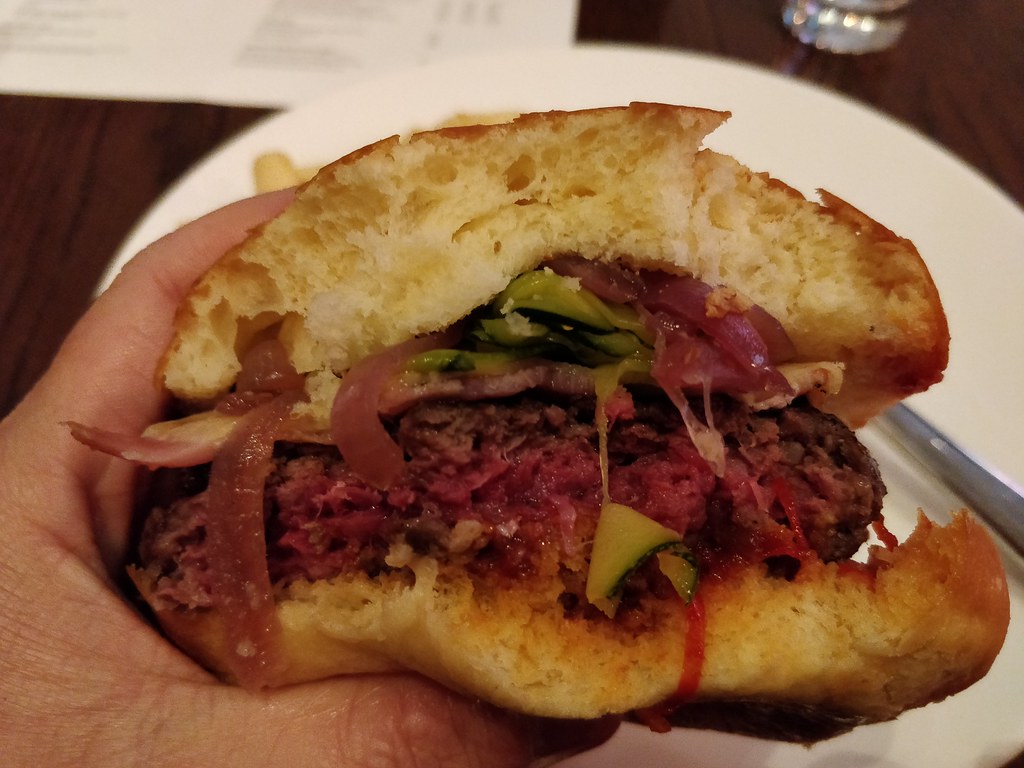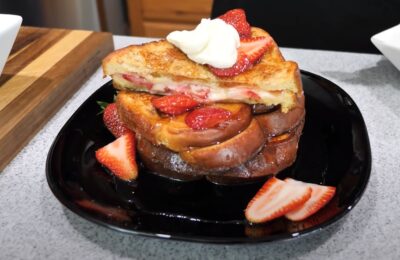The art of cooking a perfect medium rare burger is a culinary skill that balances heat and timing. Achieving that ideal balance of a caramelized exterior with a pinkish-red center is a tantalizing endeavor. Let’s explore the science and techniques behind what defines a medium rare burger and how to achieve this popular level of doneness.
<iframe width=”560″ height=”315″ src=”https://www.youtube.com/embed/g8heS109t30?si=ma8pNarlbI6oFy6q” title=”YouTube video player” frameborder=”0″ allow=”accelerometer; autoplay; clipboard-write; encrypted-media; gyroscope; picture-in-picture; web-share” allowfullscreen></iframe>
Exploring the Medium Rare
The medium rare burger strikes a precise balance between succulence and doneness, offering a unique blend of taste and texture. Delving into the finer points of achieving this state enhances the burger experience significantly for culinary enthusiasts.
What Defines ‘Medium Rare’?

A medium rare burger is cooked to an internal temperature of 130-135°F (54-57°C), creating a balance between a seared exterior and a pinkish-red center. This equilibrium promises a juicy, tender, and flavorful bite:
- Defined by a specific temperature range, medium rare cooking transforms a basic burger into a delightful sensation. It converges flavors and textures between 130-135°F (54-57°C), where the patty retains juiciness and tenderness;
- Imagine the visual appeal: slicing through vibrant colors, seared edges contrasting the tender, pink interior—a prelude to the flavor symphony awaiting your taste buds;
- At medium rare, the patty’s juiciness persists while the caramelized crust gives way to a melt-in-your-mouth texture—balancing flavors that elevate the burger experience;
- Achieving medium rare requires culinary finesse—a deep understanding of ingredients, mastering techniques, and temperature control as the guiding force;
- A medium rare burger isn’t just about taste—it’s a sensory journey through textures, flavors, and temperatures that leave a lasting impression.
In the culinary world, the medium rare burger stands as a testament to cooking finesse, transforming a basic burger into a gastronomic delight. It’s not just a level of doneness; it’s a delicate balance that creates a flavorful adventure.
Perfection techniques
Achieving the ideal medium rare burger is a skill that demands precision. From choosing the right meat blend to managing grill temperatures, each step plays a crucial role. Let’s uncover the techniques that elevate a regular burger:
- Start with quality meat—a mix of chuck and brisket, perhaps, with a balanced fat content for that juicy texture. Gently shaping loosely packed patties contributes to a melt-in-your-mouth quality;
- Preheat your grill or skillet to high heat. Sear each side of the patty briefly to seal in the juices, then reduce the heat to finish cooking without compromising tenderness;
- Using a meat thermometer ensures accuracy in reaching the ideal temperature without overcooking or undercooking;
- Allow your burger to rest briefly after grilling. This simple step helps the juices spread evenly, ensuring each bite remains flavorful.
Crafting the perfect medium rare burger involves precision and technique. Each aspect—from meat selection to the final assembly—contributes to culinary excellence. Take these tips, embark on this flavorful journey, and bring out the best in your medium rare burger.
Is it OK to eat a medium-rare beef burger?
Yes, eating a medium-rare beef burger can be safe as long as certain precautions are taken. Cooking beef to a medium-rare level means the internal temperature reaches around 130-135°F (54-57°C), which effectively kills most bacteria, including E. coli, that could be present in the meat.
However, there are a few important considerations:
- Quality of Meat: Ensure you’re using high-quality, fresh beef from a trusted source. The quality of the meat is crucial to minimize the risk of bacterial contamination;
- Handling and Storage: Properly handle and store the meat to avoid cross-contamination. Keep it refrigerated and separate from other foods;
- Cooking Technique: Use a meat thermometer to accurately gauge the internal temperature of the burger. It’s essential to reach the recommended temperature uniformly throughout the patty to ensure safety;
- Personal Health Considerations: Some individuals, such as pregnant women, young children, the elderly, or those with compromised immune systems, might be at higher risk of foodborne illness. It’s advisable for these individuals to opt for fully cooked burgers;
- Regulations and Recommendations: Follow local health regulations and recommendations regarding the consumption of undercooked meats. Regulations can vary from place to place.
In summary, when prepared and handled properly, eating a medium-rare beef burger can be safe for most people. It’s about balancing taste preferences with proper food safety practices.
Is a little pink in a burger OK?
Ensure the internal temperature of the burger reaches the recommended safe range for medium-rare, around 130-135°F (54-57°C). This temperature effectively kills harmful bacteria, making it safe to consume:
- Quality of Meat: Using high-quality, fresh beef reduces the risk of contamination. Freshness matters when opting for a burger with a pink center;
- Personal Preference: Some people prefer their burgers with a slightly pink center for juiciness and flavor. This level of doneness can be achieved without compromising safety if proper cooking methods and quality meat are used;
- Individual Health Considerations: Individuals with specific health conditions or compromised immune systems might need to be more cautious. It’s advisable for such individuals to consume burgers that are thoroughly cooked to minimize any risks.
Ultimately, a little pink in a burger can be okay as long as it reaches a safe internal temperature and the meat used is of high quality. It’s a matter of personal preference and considering individual health circumstances when deciding on the desired level of doneness.
Conclusion
Сrafting a medium rare burger involves attention to detail and technique. Each step, from selecting the meat to grilling and resting, contributes to its quality. By applying these tips, you can elevate your burger game and enjoy the flavors of a well-prepared medium rare burger.


